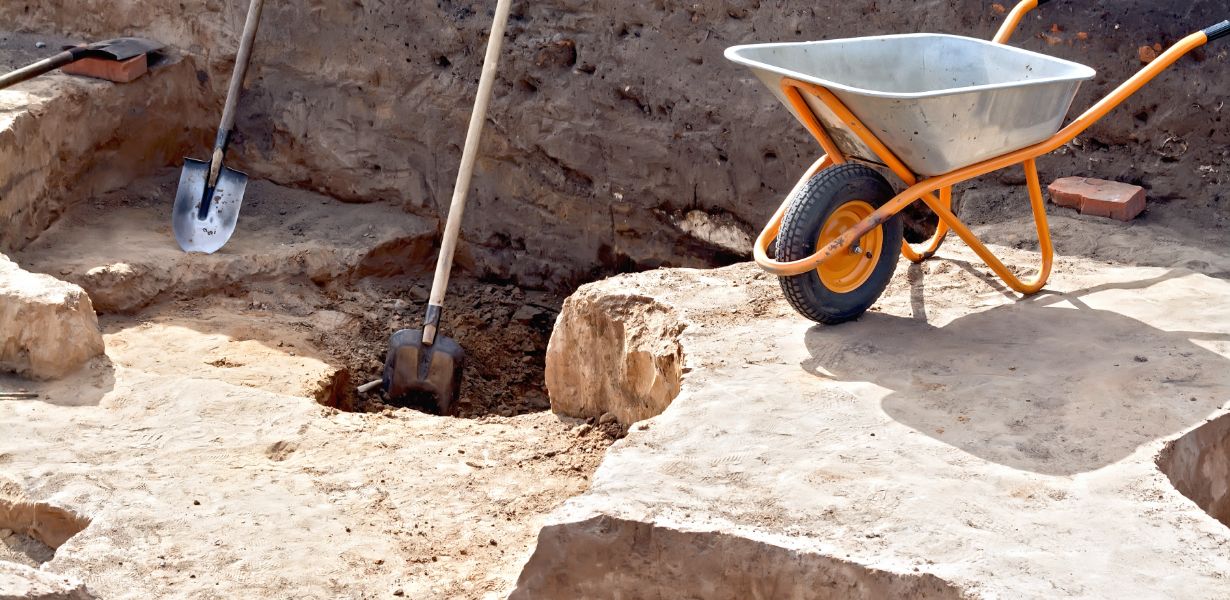
In the realm of archaeological exploration, the traditional trowel and brush have given way to a new era of discovery. Uncovering the mysteries of ancient civilizations has never been more fascinating, thanks to the integration of cutting-edge technology. This article delves into the remarkable fusion of archaeology and technology, shedding light on how these innovations are reshaping the way we understand our past.
A Digital Renaissance: 3D Scanning and Printing
The 21st century has witnessed a digital renaissance in archaeology. Advanced 3D scanning and printing technologies have revolutionized the way artifacts are preserved and presented. Archaeologists can now create highly detailed, accurate replicas of ancient objects, enabling researchers and enthusiasts alike to interact with history in unprecedented ways.
Ground-Penetrating Radar: Peering Beneath the Earth's Surface
Archaeology has gone subterranean with the use of ground-penetrating radar (GPR). This non-invasive technique allows archaeologists to scan beneath the earth's surface without disturbing the site. It has led to remarkable discoveries, from hidden chambers in Egyptian pyramids to forgotten medieval towns in Europe.
Drone Archaeology: Aerial Perspectives
Drones have become indispensable tools in archaeological exploration. By providing aerial perspectives, these unmanned aircraft can quickly survey vast areas, offering a bird's-eye view of archaeological sites. The data gathered aids in creating comprehensive site maps and identifying potential excavation areas.
Lidar Mapping: Unveiling Lost Cities
Lidar mapping is nothing short of a game-changer. By emitting laser pulses from aircraft, it can create incredibly detailed maps of the ground, even through dense vegetation. This technology has been instrumental in the discovery of hidden cities like the ancient Mayan metropolis of Tikal in Guatemala.
Spectroscopy and Chemical Analysis: Uncovering Ancient Pigments
Spectroscopy and chemical analysis have opened windows into the past by identifying the composition of pigments on ancient artifacts. This allows us to recreate the vivid colors of ancient sculptures, paintings, and pottery, enriching our understanding of art and culture in antiquity.
The Role of AI: Deciphering Ancient Texts
Artificial intelligence has found its place in archaeology, particularly in the decipherment of ancient texts. Machine learning algorithms can analyze and interpret scripts from ancient languages, shedding new light on historical records, literature, and inscriptions.
Underwater Archaeology: Shipwrecks and Sunken Cities
Unearthing the past doesn't stop at land's edge. Underwater archaeology has become a thriving field, exploring submerged shipwrecks, ports, and even entire sunken cities. Specialized equipment and remotely operated vehicles (ROVs) are indispensable in this quest to rediscover history beneath the waves.
Preservation in the Digital Age: Virtual Museums
The digital age has given rise to virtual museums. With the use of 3D modeling and virtual reality technology, ancient artifacts and historical sites can be experienced from the comfort of one's home. This innovative approach to preservation ensures that cultural heritage remains accessible to a global audience.
Ethical Considerations: Balancing Discovery and Preservation
As we embrace these technological advancements, it is crucial to strike a balance between discovery and preservation. The ethical dimension of archaeology remains a key consideration, as we seek to respect the cultural significance of these sites and artifacts.
Final Words
In the age of rapidly evolving technology, archaeology has evolved into an enthralling blend of tradition and innovation. The integration of cutting-edge tech has brought ancient civilizations back to life, offering us new perspectives on our shared history. From the depths of the ocean to the heart of dense jungles, the past is no longer hidden, and we continue to unearth its secrets.
Commonly Asked Questions
1. How has technology impacted archaeological site preservation?
Technology has significantly improved archaeological site preservation through 3D scanning, Lidar mapping, and virtual museums. These innovations help protect sites while making them accessible to a global audience.
2. What are the ethical challenges in modern archaeology?
Modern archaeology faces ethical challenges in balancing discovery and preservation, as well as addressing the potential commercialization and exploitation of artifacts and sites.
3. How do drones aid archaeological exploration?
Drones provide aerial perspectives, enabling quick surveys of large areas and the creation of comprehensive site maps, facilitating excavation planning and research.
4. What is ground-penetrating radar, and how is it used in archaeology?
Ground-penetrating radar is a non-invasive technique that scans beneath the earth's surface without disturbing the site. It's used to detect buried structures and artifacts, offering valuable insights without excavation.
5. How do virtual museums contribute to the field of archaeology?
Virtual museums use 3D modeling and virtual reality to make ancient artifacts and historical sites accessible online, allowing a global audience to explore and learn about the past.





